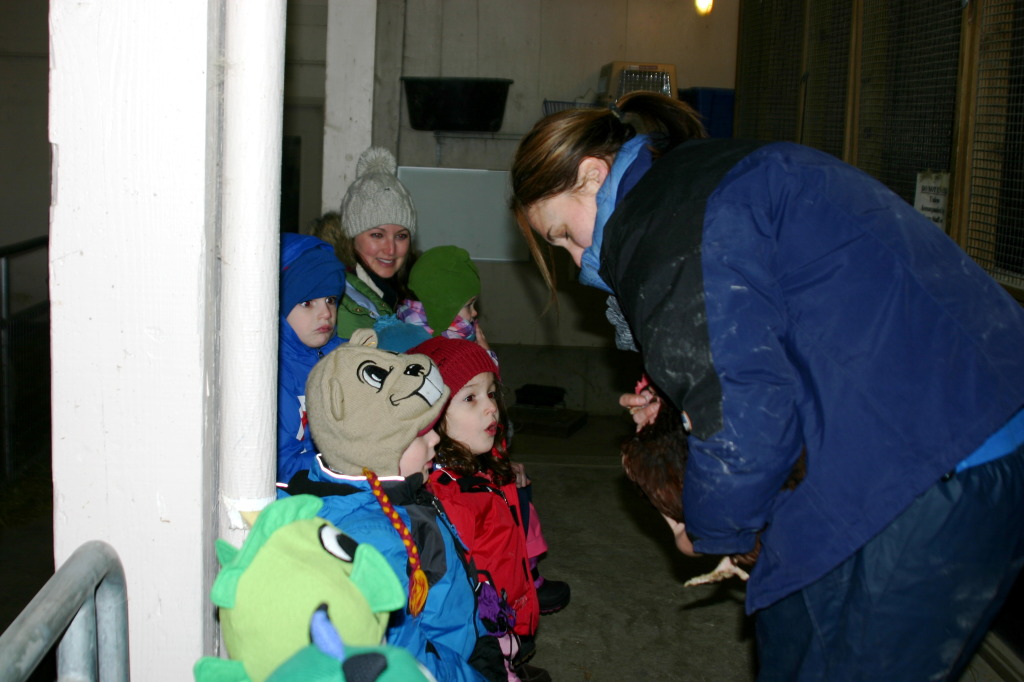“It is not the language of painters but the language of nature which one should listen to…The feeling for the things themselves, for reality, is more important than the feeling for pictures.” – Vincent van Gogh
The children are fascinated and attracted to nature and all living things. Being at the farm brought up many smiles and giggles in all of them, some completely surprised looks, some smells to get used to and some fears to overcome which strengthened the importance of coming back again in the spring!
Here is what we did during our trip:
- We rode a school bus! And we met farmer named Hana who showed us around and answered any questions we had.
- We fed the animals: lettuce to chickens, straw to sheep, and cupcakes to the pigs! Some of the food the animals eat is donated by local grocery stores. The cupcakes were sure very memorable!
- We tasted a treat straight from the garden too! Yellow, Orange and Purple Carrots!
- We visited some animals that stay outside during the winter months. It was cold!!!
- And we made a wool craft before heading back to the city. Our farmer Hana showed us the process of preparing wool for knitting.
We came back wishing we could have chickens, cows and sheep running around every day! It was such a fun way to spend a day in a natural environment. The children’s curiosity with nature and unique way of learning at their young age requires discovery and exploring.
John Burroughs wrote that, “Knowledge without love will not stick. But if love comes first, knowledge is sure to follow.” The problem with most environmental education programs for young children is that they try to impart knowledge and responsibility before children have been allowed to develop a loving relationship with the earth (Sobel 1996, Wilson 1997). Children’s emotional and affective values of nature develop earlier than their abstract, logical and rational perspectives (Kellert 2002). We need to allow children to develop their biophilia, their love for the Earth, before we ask them to save it. Rather then books and lectures, nature itself is children’s best teacher (Coffey 2001). Young children tend to develop emotional attachments to what is familiar and comfortable for them (Wilson 1996). The more personal children’s experience with nature, the more environmentally concerned and active children are likely to become (Bunting & Cousins 1985, Harvey 1989).
We can’t wait to go back to Gale Woods farm in the Spring!
